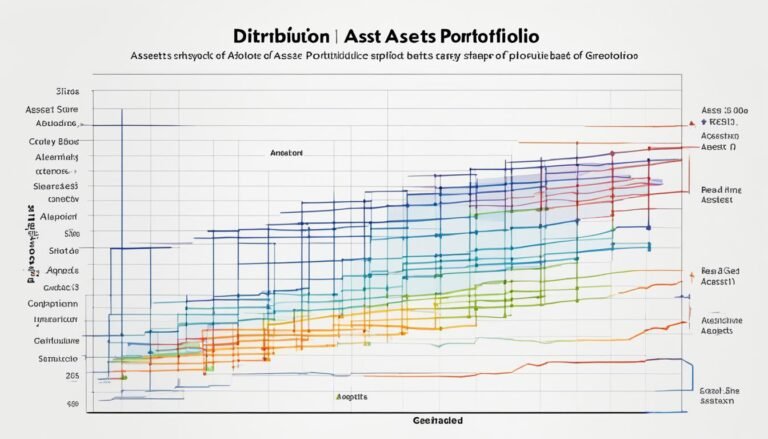Data Analysis in Finance
Just like a skilled detective piecing together clues, data analysis in finance reveals hidden patterns and insights that can guide critical decision-making processes in the financial world.
From identifying trends to evaluating risks and predicting market movements, the domain of finance is increasingly reliant on the power of data analysis.
By harnessing the vast amounts of financial data available, professionals can gain a competitive edge and navigate the complexities of today’s dynamic markets with precision.
Discover how data analysis is revolutionizing the way financial strategies are crafted and executed in a world driven by numbers and analytics.
Key Takeaways
- Data analysis in finance provides insights for informed decision-making.
- Various data sources like market data and financial statements drive analysis.
- Tools like regression analysis and predictive modeling enhance financial strategies.
- Risk management strategies like diversification and hedging mitigate financial risks effectively.
The Role of Data Analysis
In the domain of finance, data analysis plays a critical role in decision-making processes, providing valuable insights into market trends and financial performance. Data-driven decision making lies at the core of modern financial strategies. By harnessing the power of data interpretation, financial experts can dig deep into the numbers to uncover hidden patterns and correlations. This analytical approach enables them to make informed decisions based on concrete evidence rather than intuition.
Performance analysis is another key aspect of data-driven insights. By meticulously analyzing historical data and current market conditions, financial analysts can assess the performance of various investment vehicles, portfolios, or companies. This analysis helps in evaluating risks, identifying opportunities for growth, and optimizing investment strategies. Through the lens of data analysis, trends emerge, outliers are identified, and strategies are refined to maximize returns and minimize losses.
Key Data Sources
When analyzing finance data, you rely on Market Data Sources for current and historical information on asset prices.
Financial Statement Sources provide vital insights into a company’s performance and financial health.
Utilizing Economic Indicators helps you gauge the overall economic environment and make informed decisions.
Market Data Sources
Utilize a variety of key data sources to enhance your market data analysis and gain valuable insights into financial trends. When delving into market data sources, consider the following:
- Data Scraping Techniques: Employ advanced data scraping methods to extract valuable information from various online platforms efficiently.
- Data Guarantee Methods: Guarantee your datasets are accurate and reliable by utilizing robust data cleaning techniques to eliminate errors and inconsistencies.
- Real-Time Data Integration: Incorporate real-time data feeds into your analysis to stay updated with the latest market movements and make informed decisions promptly.
- Alternative Data Sources: Explore non-traditional data outlets such as social media trends or satellite imagery to uncover unique insights and gain a competitive edge in the market.
Financial Statement Sources
To enhance your financial data analysis, consider accessing key data sources such as financial statements, which provide essential insights into a company’s performance and financial health. When analyzing financial statements, focus on balance sheet analysis to assess the company’s assets, liabilities, and equity, providing a snapshot of its financial position at a specific point in time. Additionally, explore into income statement interpretation to understand the company’s revenues, expenses, and profitability over a set period. Here’s a brief overview of the key financial statement sources:
| Financial Statement | Purpose |
|---|---|
| Balance Sheet | Financial Position |
| Income Statement | Financial Performance |
Economic Indicators Usage
Consider utilizing key economic indicators as essential data sources for your financial analysis, providing valuable insights into the broader economic landscape and its impact on your financial decisions. When incorporating economic indicators into your analysis, focus on:
- Leading Indicators Analysis: Use leading indicators to anticipate future trends and adjust your financial strategies accordingly.
- Economic Forecasting: Leverage economic indicators for forecasting purposes to make informed decisions about investments and risks.
- Macroeconomic Data Interpretation: Analyze macroeconomic data to understand the overall economic conditions and their implications for your financial portfolio.
- Market Impact: Keep a close eye on economic indicators to assess their impact on the market trends and adjust your financial decisions accordingly.
Statistical Tools and Techniques
You need to understand the significance of descriptive statistics and how it provides a framework for summarizing data effectively.
Additionally, grasp the fundamentals of regression analysis to comprehend relationships between variables and make predictions based on historical data patterns.
These two statistical tools are essential for interpreting financial data accurately and deriving meaningful insights to inform decision-making processes in the area of finance.
Descriptive Statistics Overview
When analyzing financial data, employing descriptive statistics provides a thorough overview of the data distribution and key numerical summaries. In finance, understanding the central tendencies, dispersion, and shape of the data is vital for making informed decisions. Here are some key points to keep in mind:
- Mean: The average value of a dataset, calculated by summing all values and dividing by the total number of observations.
- Median: The middle value of a dataset when arranged in ascending order, representing the central tendency.
- Standard Deviation: Measures the dispersion of data points around the mean.
- Skewness: Indicates the symmetry of the data distribution; positive skewness means a longer right tail, while negative skewness indicates a longer left tail.
Regression Analysis Basics
Understanding the principles of regression analysis is essential for extracting valuable insights from financial data sets. In finance, linear regression is commonly used to analyze the relationship between variables. It helps in predicting future trends, identifying patterns, and making informed decisions. Correlation analysis, on the other hand, allows you to measure the strength and direction of the relationship between two variables. Below is a table summarizing the key differences between linear regression and correlation analysis:
| Regression Analysis | Correlation Analysis |
|---|---|
| Predicts one variable based on | Measures the strength |
| the relationship with another. | and direction of the |
| relationship between two | |
| variables. |
Financial Trend Analysis
Analyzing financial trends provides valuable insights into the performance and direction of a company’s financial health. This practice involves examining historical data to identify patterns and make informed decisions about the future.
Here are four key aspects to ponder when conducting financial trend analysis:
- Time Series Analysis: By studying data points collected over consecutive time intervals, you can observe how financial metrics change over time. This analysis helps in identifying trends, seasonality, and forecasting future performance.
- Sentiment Analysis: Understanding market sentiment towards a company can provide insights into potential shifts in stock prices or overall financial performance. By analyzing news articles, social media posts, and other sources, sentiment analysis can gauge public perception.
- Comparative Analysis: Contrasting a company’s financial data with industry peers or competitors can highlight relative strengths and weaknesses. This comparison aids in benchmarking performance and identifying areas for improvement.
- Ratio Analysis: Examining key financial ratios like profitability, liquidity, and leverage ratios provides a thorough view of a company’s financial health. Ratio analysis helps in evaluating efficiency, risk, and overall performance.
Risk Management Strategies
To effectively manage risks in finance, implementing strategic risk management strategies is imperative in safeguarding the financial stability of a company. Quantitative analysis plays a critical role in evaluating risks by using mathematical models to quantify potential losses. By conducting thorough risk evaluations, businesses can identify and prioritize risks, enabling them to allocate resources efficiently to mitigate these risks.
Risk management strategies involve a combination of techniques such as diversification, hedging, and insurance to protect against potential financial losses. Diversification, for instance, spreads investments across different assets to reduce exposure to any single risk. Hedging involves using financial instruments to offset the risks of adverse price movements. Insurance provides a safety net by transferring specific risks to an insurance company in exchange for premiums.
Predictive Modeling in Finance
Utilizing predictive modeling techniques in finance enables companies to forecast future market trends and make data-driven decisions to optimize their financial strategies. In the domain of finance, predictive modeling plays an important role in leveraging historical data to anticipate future outcomes accurately. Here are some key aspects to take into account:
- Machine Learning Applications: Machine learning algorithms are extensively used in predictive modeling to analyze large datasets and identify complex patterns that traditional statistical models may overlook. These applications help in making more accurate predictions and improving decision-making processes.
- Time Series Forecasting: Time series forecasting is a critical component of predictive modeling in finance, focusing on predicting future values based on past data patterns. By analyzing historical trends and cyclical patterns, financial analysts can make informed predictions about market movements and asset prices.
- Algorithm Selection: Choosing the right predictive modeling algorithm is important for accurate predictions. Different algorithms such as linear regression, decision trees, and neural networks have varying strengths and weaknesses, impacting the predictive accuracy of the model.
- Model Evaluation: Regular evaluation of predictive models is essential to guarantee their effectiveness. By evaluating metrics like accuracy, precision, and recall, financial institutions can fine-tune their models for better performance and reliability.
Performance Evaluation Metrics
In the domain of finance, understanding the effectiveness of predictive models requires a keen focus on performance evaluation metrics. When evaluating financial models, comparative analysis techniques and benchmarking strategies play an essential role in determining their efficacy. Return on investment analysis and risk-adjusted returns are vital metrics that help in evaluating the profitability and risk associated with a particular investment strategy.
To explore further into the performance evaluation metrics used in finance, consider the following table showcasing key metrics and their significance:
| Metric | Description | Importance |
|---|---|---|
| Comparative Analysis | Evaluates model performance against competitors | Identifies relative strengths and weaknesses |
| Benchmarking Strategies | Compares model outcomes against a benchmark | Sets standards for performance evaluation |
| Return on Investment | Measures profitability of an investment | Indicates the financial gain or loss |
| Risk-Adjusted Returns | Considers risk when evaluating investment returns | Provides a more accurate view of performance |
Data Visualization in Finance
Data visualization plays an important role in analyzing financial data efficiently and effectively. Utilizing data visualization techniques in finance can greatly impact decision-making processes. Here are four key ways data visualization enhances financial analysis:
- Identifying Trends: Visualizing data through graphs and charts allows you to quickly spot trends, patterns, and anomalies in financial data, enabling better-informed decision-making.
- Comparing Performance: By representing financial metrics visually, such as through comparative bar graphs or line charts, you can easily compare the performance of different assets, portfolios, or investment strategies.
- Risk Evaluation: Visual representations of risk measures, like volatility or correlation matrices, help in evaluating and managing risk more effectively, leading to more sound financial decisions.
- Enhancing Communication: Visualizations simplify complex financial information, making it easier to communicate findings and insights with stakeholders, ultimately improving collaboration and the decision-making process.
Conclusion
You have explored the important role of data analysis in finance. From identifying key data sources to utilizing statistical tools and techniques for financial trend analysis. By implementing risk management strategies and predictive modeling, you can make informed decisions and evaluate performance metrics effectively.
Remember, in the world of finance, data is the key that opens the door to success. Like a compass guiding you through the complex terrain of the market.







